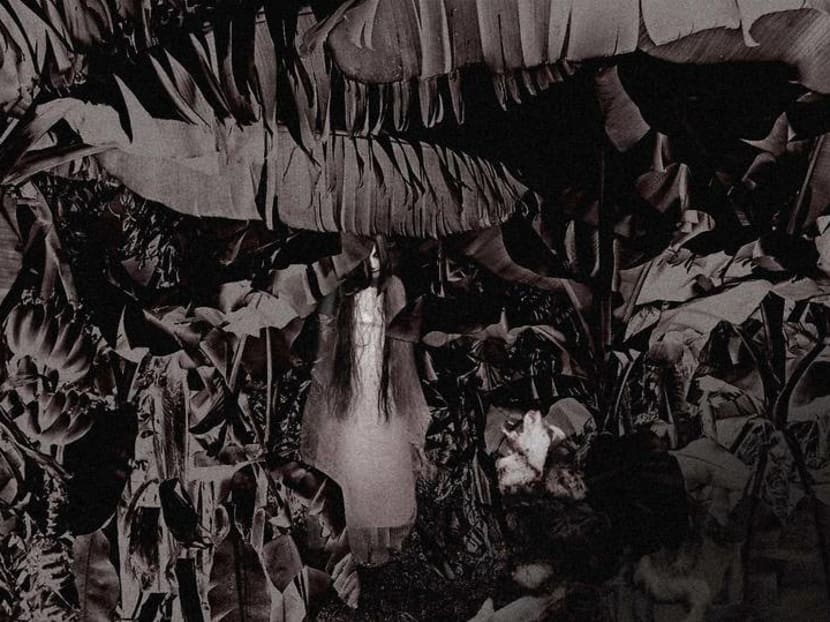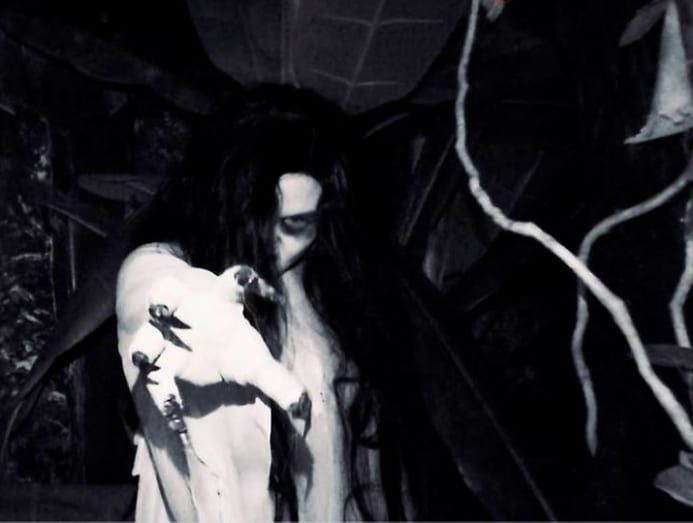Halloween doesn't scare us. We're Asian – we've got the pontianak all year round
Dracula, who? CNA Lifestyle takes a look at the legend of one of Asia's most iconic ghouls, avenging injustices against women in misogynistic communities.

The Pontianak, one of Asia's scariest ghouls. (Art: Chern Ling)
It is past midnight. You’re a tired man after a long day’s work who finds himself driving home on a particularly dark and lonely road. Suddenly, you spot a beautiful young lady in a flowy white dress up ahead.
She appears distressed, so you stop to offer some assistance. As you step out of the car, the night air, you suddenly notice, smells fragrant and floral, like frangipani. The howling dog you figure is hiding among the banana trees that line the road abruptly starts whining. The sweet air turns into an awful stench.
The very last thing you hear is the high-pitch shriek of a baby crying as the beautiful woman transforms into a terrifying ghoul. Also, she's eating your organs, so it's a pretty bad day overall.
This is a tale that is oft told by taxi drivers, grandmothers and National Servicemen alike, and repeated with relish to scare generations of children. Yes, children.
This is probably why most Asians look decidedly unimpressed at Halloween parties this time of year. Oh, you're Dracula? Pfft. Frankenstein's monster? Nice to meet you. The Mummy? You should meet my mommy – that'll scare ya.
Here in Southeast Asia, our ghouls are next-level. And the pontianak is the comely (at least momentarily) face of Asian horror, feeding on a readily available supernatural framework that exploits our worst fears. She's also starred in many regional movies.
She's like Sadako, except she doesn't give you seven days to live because she's on a tight schedule here, buddy.
READ: Singapore celebrity ghost stories: A spooky road, a very strong 'perfume' and a headless man
According to Malay folklore in Singapore, Malaysia and Indonesia, a pontianak is the ghost of a pregnant woman who has died a violent death either at the hands of a man or during childbirth, turning her into a vengeful vampire.
Usually portrayed as long-haired, pale-skinned and dressed in white, the red-eyed pontianak is believed to take on the form of beautiful maidens to seduce and lure her male victims before using her dagger-like nails to tear open their stomachs. Apparently, she is also prone to seeking revenge on men by dismembering their genitals.
Therapy, apparently, is for the living.

Across the region, supernatural beliefs are as diverse as the many cultures and communities that come up with them. Each culture has its own set of ghosts and spirits, be they benevolent or malevolent. While the Chinese dedicate an entire month to the Hungry Ghost Festival, where deceased ancestors are believed to drop by for a meal, poltergeists and possessions serve as a source of terror for the Indians.
But it is the pontianak – or kuntilanak, as she’s called in Indonesia, or churel in Bangladesh, India, and Pakistan – who has, erm, risen to become one of the region’s most iconic spooks.
What makes her so scary? It is her classic backstory of tragedy and revenge, which taps into our primal, social and cultural fears. Asian horror tropes are typically about cause and effect, misfortune and retribution – all of which lean into something all the more real and frightening.
According to a BroadlyVice article, the pontianak, having endured violence and suffering when alive, now avenges the real-life crimes of femicide, rape and domestic abuse that women living in misogynistic societies experience on a daily basis in death.
"She is righting the injustices within a traditional society that has many constraints for women," said Adeline Kueh, senior lecturer at Singapore’s LASALLE College of the Arts in the same article.
And that should scare the bad men. Boo.





